#propaganda posters
Photo
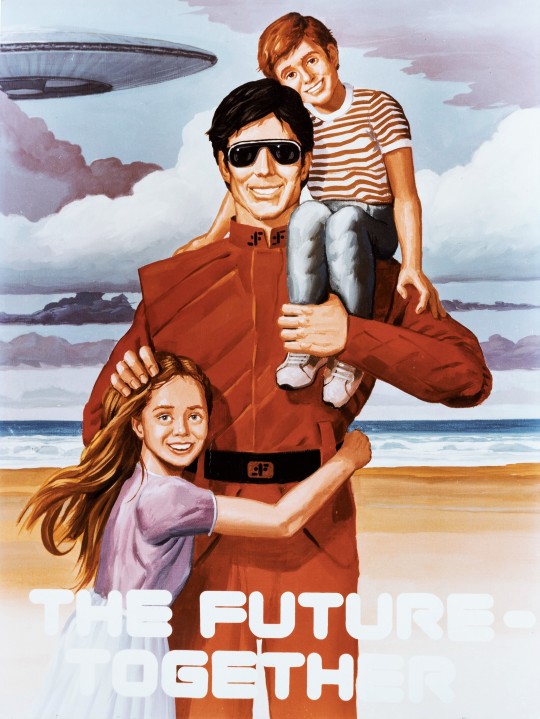
The Future Together - V (1983)
#v miniseries#the visitors#80s tv series#80s sci-fi art#tv props#80s sci-fi#the future together#propaganda posters#nbc tv#1980s#1983
524 notes
·
View notes
Text

Thunderbolts blast ’em!
#vintage illustration#vintage poster#army air forces#u.s. army#propaganda#propaganda posters#u.s. military#fighter aircraft#bomber aircraft#life during wartime#wwii#ww2 history#ww2 aircraft#ww2 art#ww2#military aircraft#attack aircraft#republic p-47 thunderbolt#republic aviation#p-47 thunderbolt#p-47
72 notes
·
View notes
Text
Food Propaganda Posters: From War-Time Rations to Post-War Indulgences 🍔🥩🥧
Food propaganda posters of World Wars I and II rallied the public around wartime efforts, such as home gardening and rationing. But did they shape our post-war diets? Let's explore.
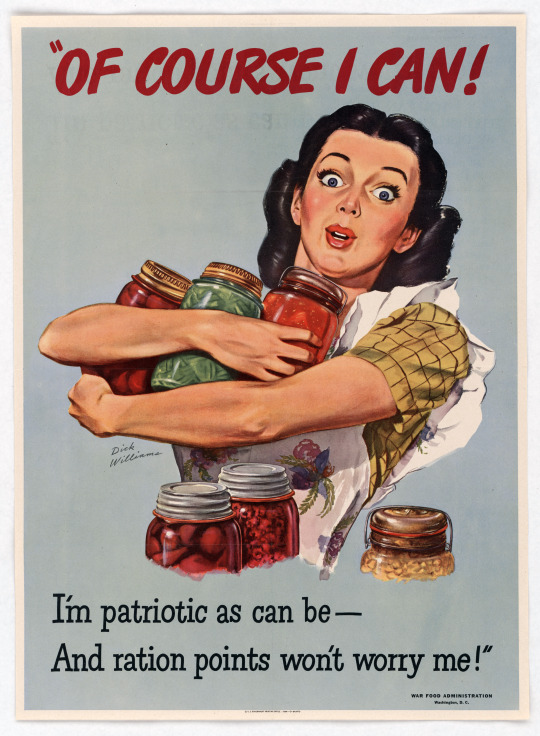


Garden-to-Freezer Revolution 🍡
Victory Gardens, immortalized in posters like these, epitomized wartime self-sufficiency. The advent of post-war technology led to a surge in frozen foods, replacing these gardens with ads for TV dinners.

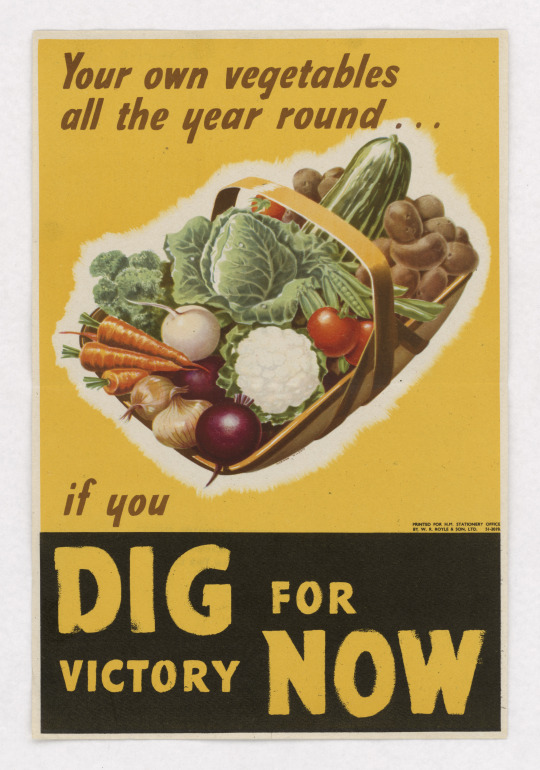

Meat-Centered Diet 🥩🍖
Wartime posters urged citizens to explore meat alternatives. Post-war advances in farming made meat more accessible and led to a meat-centered diet.


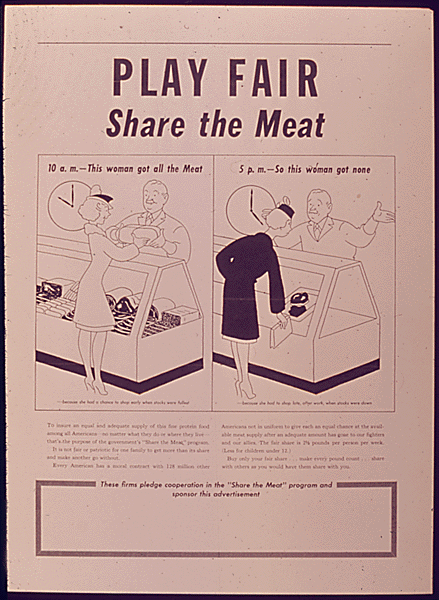
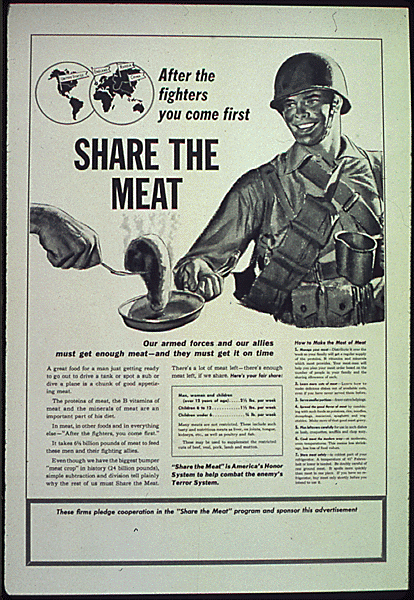
Tin Culture 🍱
Canning, vital during the wars for preserving homegrown produce, transformed into a culture of pre-packaged canned foods.




Sugar Surge 🍨🍭🍬
Rationing sugar was a wartime staple, but in the 1950s, sugary foods and drinks exploded onto the scene, illustrated by soda pop advertisements.
While food propaganda posters influenced wartime diets, the post-war era saw a drastic shift towards convenience and indulgence, as mirrored in the advertising of the time.
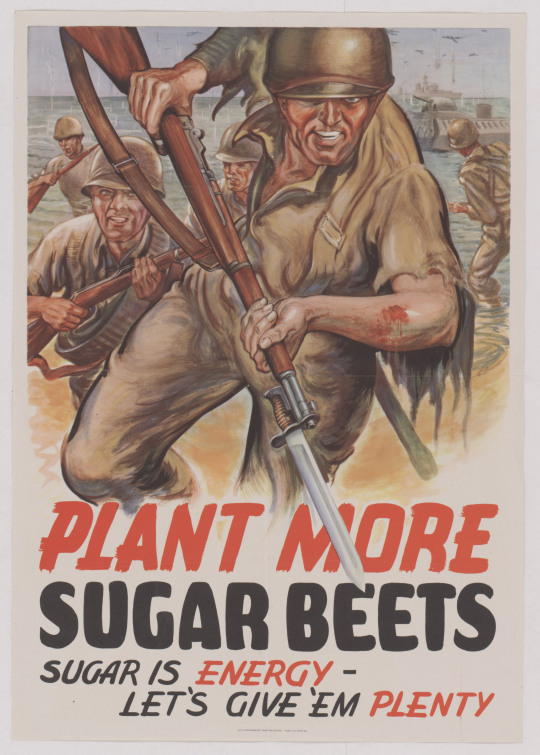
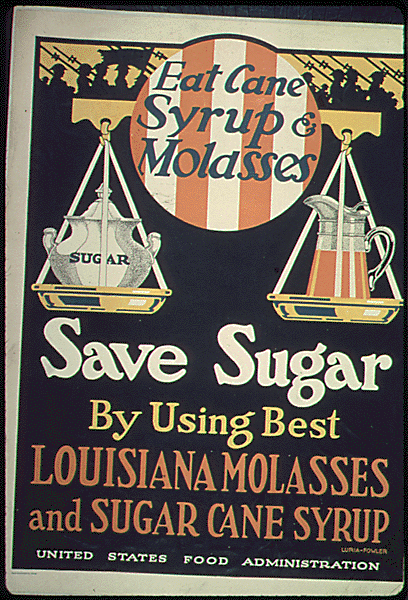
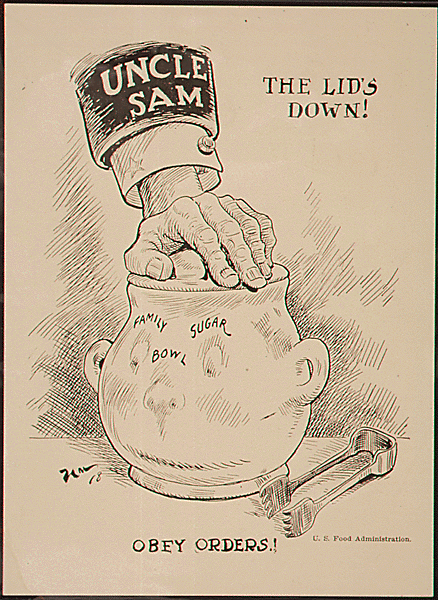



What can you discover in our Catalog?
#national archives#history#archives#records#war posters#propaganda#propaganda posters#food#food history#food posters
200 notes
·
View notes
Photo
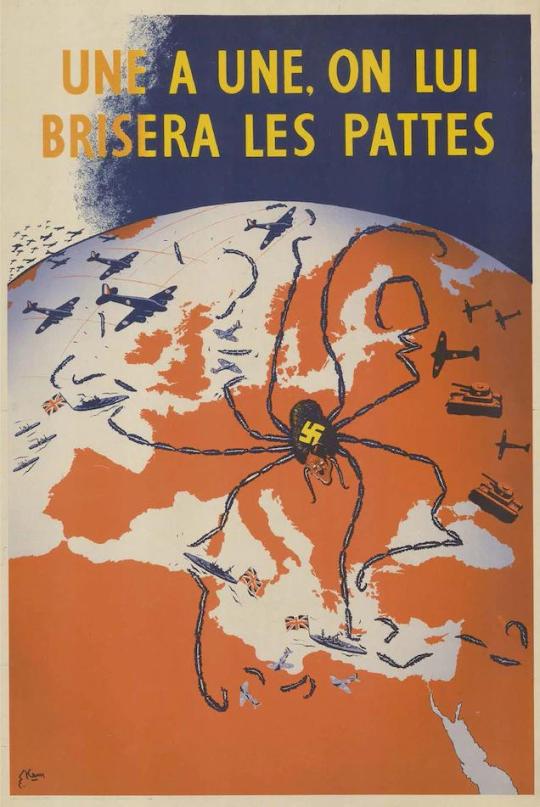
“One by one his legs will be broken”, French WW2 poster
237 notes
·
View notes
Text
Recruitment propaganda translation

10 notes
·
View notes
Text
"Let the atom be a worker, not a soldier" poster (USSR, 1967)
artist: Kuzma Vladimirov

10 notes
·
View notes
Text
Home Front Posters
During World War II, millions of Americans of all ages responded to appeals from the government and private organizations to volunteer for service on the “Home Front.” Many joined civil defense units that organized community blackouts and air raid drills. Tens of thousands volunteered to serve in the Army Air Forces Ground Observer Corps, acting as lookouts for enemy aircraft at observation posts along the nation’s coastline.
See more posters on our Digital Artifact Collection: https://fdr.artifacts.archives.gov/search/%22civilian%20defense%22




Follow along throughout 2024 as we feature more #TheArtOfWar WWII posters from our Digital Artifact Collection.

#the art of war#ww2 posters#propaganda posters#wwii#world war 2#world war ii#museum from home#1940s#ww2#museum collection
9 notes
·
View notes
Photo

I made a little sample poster featuring our new mascot, just sort of a general reminder to fill out your Battle Ballots (based on this poster). Plus I figured even if Sommie was available to vote for, they wouldn’t need my help sweeping the whole thing!
Commission me for a propaganda poster of your favorite (or prospective) FE Hero before CYL ends! Click here for details!
#fire emblem#cyl7#fe heroes#fe engage#fire emblem heroes#fire emblem engage#sommie#cyl#choose your legends#propaganda posters#commissions
100 notes
·
View notes
Photo

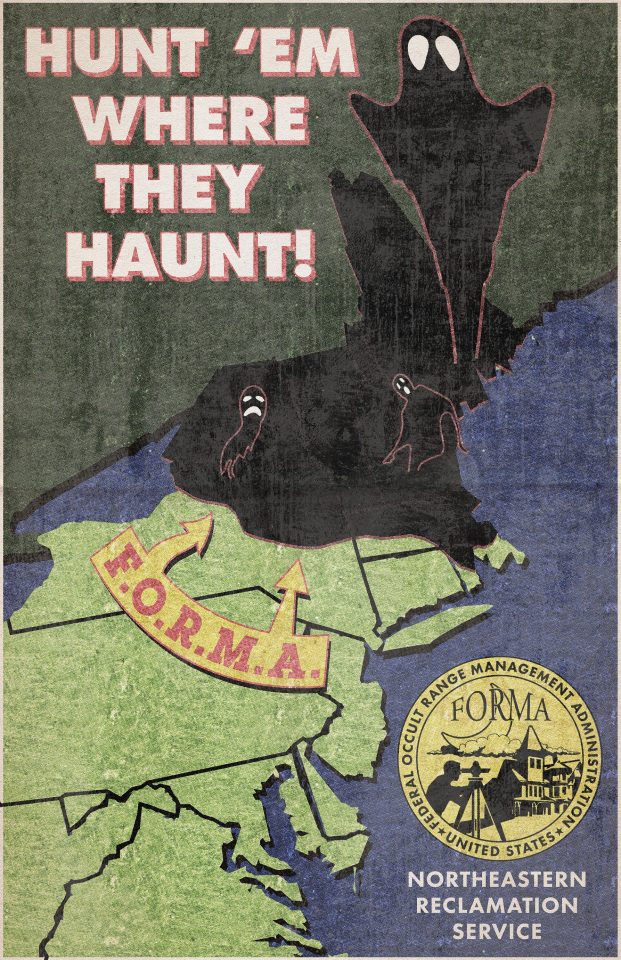
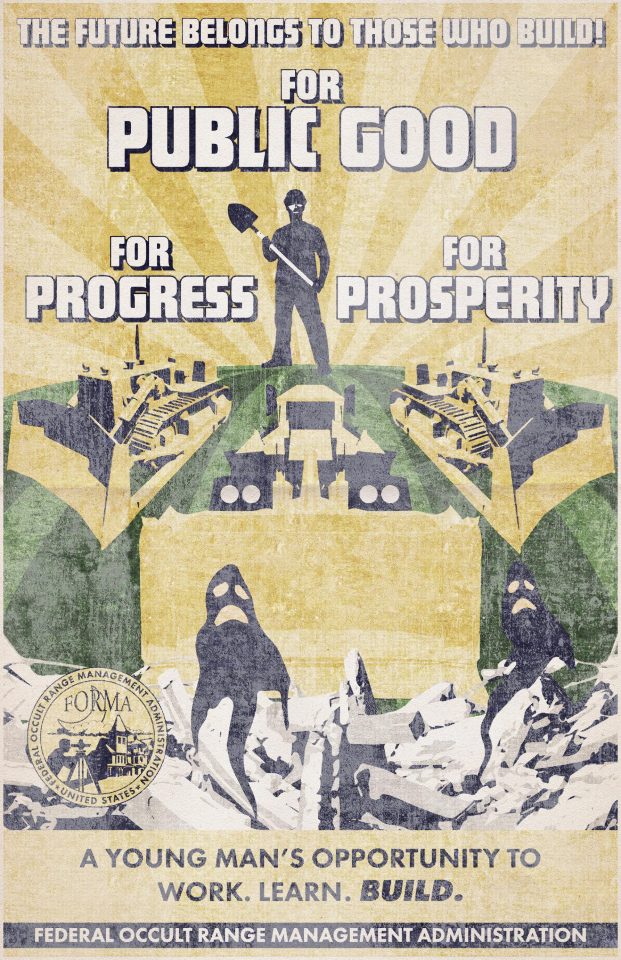
Vintage NRS/FORMA recruitment posters from around the early 1940s, right before the outbreak of the second World War.
#spectral haptics#worldbuilding#propaganda posters#horror#ghosts#folklore#horror art#worldbuilding art#found object#unreality
99 notes
·
View notes
Text

THE BOMB AS "BLOODY DAGGER" GIVES THE PIECE AN ESPECIALLY BRUTAL TOUCH.
PIC INFO: Spotlight on an anti-Richard Nixon Vietnam War-era propaganda poster that translates as "Nixon the Murderer," c. 1972.
OVERVIEW: "In the 1968 election, Republican Richard Nixon claimed to have a plan to end the war in Vietnam, but, in fact, it took him five years to disengage the United States from Vietnam.
Nixon provided the South Vietnamese army with new training and improved weapons and tried to frighten the North Vietnamese to the peace table by demonstrating his willingness to bomb urban areas and mine harbors. He also hoped to orchestrate Soviet and Chinese pressure on North Vietnam.
The most controversial aspect of his strategy was an effort to cut the Ho Chi Minh supply trail by secretly bombing North Vietnamese sanctuaries in Cambodia and invading that country and Laos. The U.S. and South Vietnamese incursion into Cambodia in April 1970 helped destabilize the country, provoking a bloody civil war and bringing to power the murderous Khmer Rouge."
-- VIETNAM PROPAGANDA (Vietnamese Propaganda Art Poster Shop from Hanoi, Vietnam)
Source: www.vietnampropaganda.com/product/nixon-the-assassin.
#Richard Nixon#Nixon the Murderer#Nixon#Anti-Nixon#Anti-Richard Nixon#Vietnam War#Vietnam#Vietnamese#Vietnamese Propaganda Posters#Posters#Poster#Propaganda Posters#Poster Art#Super Seventies#1972#Anti-war#1970s#70s#Richard M. Nixon#Vintage Posters#Nixon the Assassin#Propaganda poster#Richard Milhous Nixon#Americana#American History#Anti-Vietnam War#Military Industrial Complex#Tricky Dick#American Style#Illustration
4 notes
·
View notes
Text
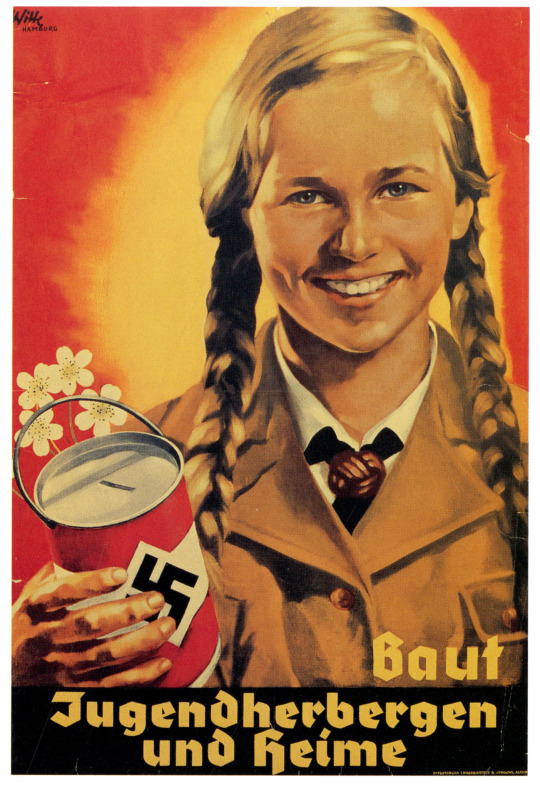
source: bishopsbox
Nazi propaganda poster (1938, illustrator: Hermann Witte): “Build youth hostels and homes”. Imperial War Museum, London.
Cartel nazi de propaganda (1938, ilustrador: Hermann Witte): "Construye albergues juveniles y hogares". Imperial War Museum, Londres.
#1939#herman witte#nazi propaganda posters#propaganda posters#propaganda#nazi germany illustrators#illustration#Bund Deutscher Mädel
5 notes
·
View notes
Text

Loose lips ... you know the rest 🚢 by helloliriels ⛵
(I think this just might be my masterpiece).
@johnlocky @chinike @rhasima @chriscalledmesweetie @justanobsessedpan @myriath @gaylilsherlock @fawnhickory @musingsofmyown @masterofhounds @bluebellofbakerstreet @totallysilvergirl @shelleysprometheus @7-percent @sarahthecoat @inevitably-johnlocked @topsyturvy-turtely @john-smiths-jawline @whatnext2020 @amyreadsandstresses @pocketwatchofmycroft @angrybagginshieldbakery @rachelkhanh @egregiously-chuffed @ineffableuser @bakersttardis @peepingcreek @iwantthatbelstaffanditsoccupant @glows-n-the-dark @inatshej @pansherlock @ohlooktheresabee @fluffbyday-smutbynight @meetinginsamarra @liquor-liquor-lips @mydogwatson @bachfor-reichenbatch @arwamachine @discordantwords @simplyclockwork @justnerdystuffs @liifafaa @wizama @a-different-equation @janetm74 @ephemeraljimin @khorazir @kettykika78 @safedistancefrombeingsmart
War propaganda posters *Johnlocked* for the Crack Fic campaign! Have an idea or over the top war poster to crack? Send it my way!
#2022 year of the crack fic#crack fic campaign#propaganda posters#johnlocked#for your enjoyment#join the crack fic collection with your masterpiece!#come on then ...#loosen up those fingers#wheres a good kissing scene#the world is waiting
66 notes
·
View notes
Text

Food comes first. U.S. Department of Agriculture - 1944.
#vintage advertising#vintage illustration#ww2#wwii#life during wartime#the home front#farming#u.s. department of agriculture#usda#farmers#world war ii#vintage posters#propaganda posters
61 notes
·
View notes
Text
Fire Safety in the U.S.: The Story Behind the Posters 🔥🧯
Fire safety in the United States caught fire (not literally!) after the Great Chicago Fire of 1871. This event prompted the creation of the National Fire Protection Association (NFPA) in 1896, laying the groundwork for fire safety regulations.

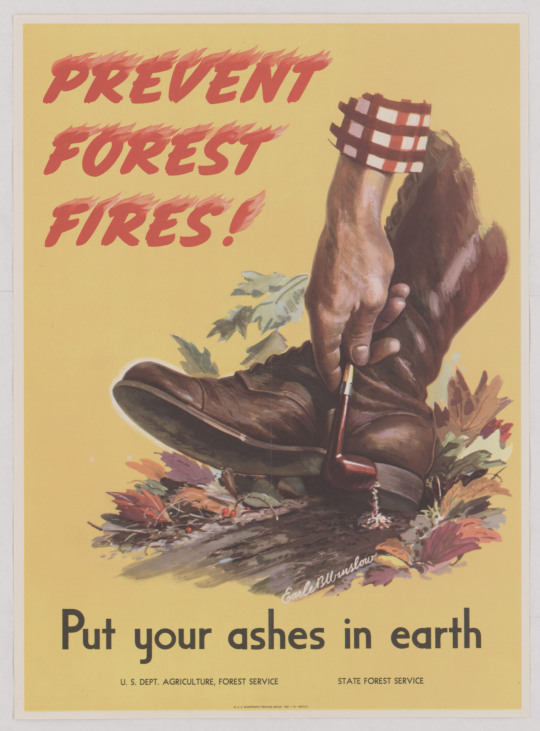
However, it wasn't until the mid-20th century that federal agencies really stoked the flames of fire safety education. During World War II, the U.S. Forest Service, in collaboration with the Ad Council, introduced Smokey Bear, whose "Only you can prevent forest fires" message would later become iconic.


So, why posters? Well, they're a visually striking way to catch people's attention and convey important messages succinctly. They use a combination of strong imagery and memorable slogans to imprint key safety messages into the public consciousness. These images and words, once seen, can be recalled in crucial moments, aiding in both fire prevention and appropriate response.

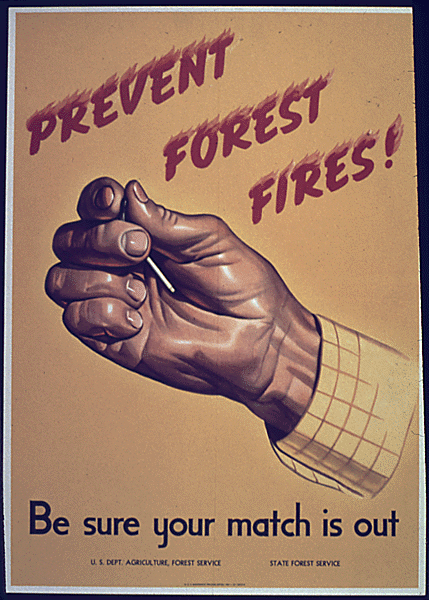

Through the years, the government and various organizations have leveraged the power of posters to reinforce fire safety principles. From the 1970s' "Learn Not to Burn" program by NFPA aimed at children, to modern campaigns focusing on smoke alarms and fire escape plans, posters have been instrumental in these educational drives.
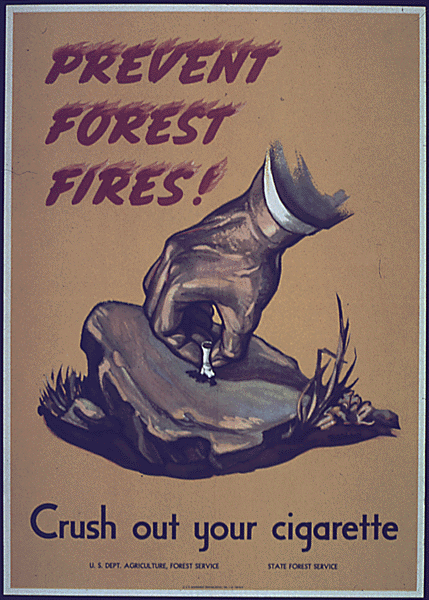

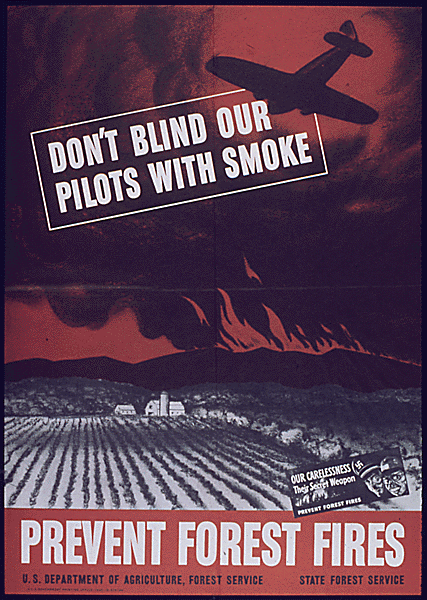


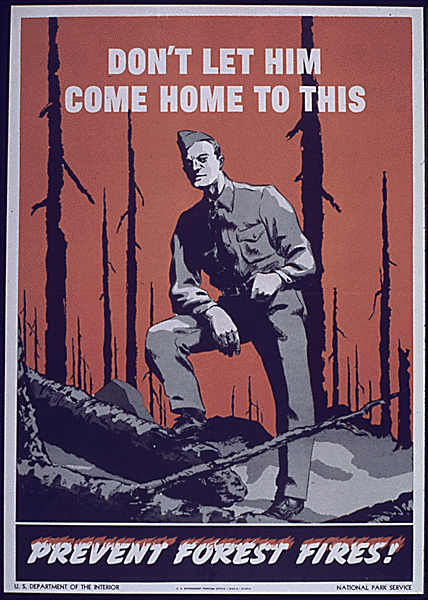
The history of fire safety programs in the U.S. is a testament to the power of public education. And the posters? They're the colorful champions, the unsung heroes, carrying the vital messages of these programs to the public eye. Because, after all, prevention is the best firefighting strategy!
#national archives#posters#propaganda posters#propaganda#history#forest fires#smokey the bear#fire safety#fires
190 notes
·
View notes
Text
“These women will die for Rhodesia?”
I see.

There’s the propaganda poster.
Looks like some b-movie shit.
Except they didn’t.
They didn’t die for “Rhodesia”.
Instead, when their enemies fought back, they panicked and ran away, fleeing to South Africa or the UK or wherever else.
And now their jaded, bitter descendants spend their days bitching about it on the internet.
#dougie rambles#personal stuff#vent post#my poor attempt at a joke#lies#fuck Rhodesia#Rhodesia#rhodesian bush war#zimbabwe#decolonization#political crap#thirst trap#1970s#propaganda poster#bullshit#africa#propaganda#propaganda posters#posters#sterling smg#camouflage#wtf#south africa#apartheid#united kingdom#browning hi power#i think#guns#firearms#weapons
6 notes
·
View notes
Photo

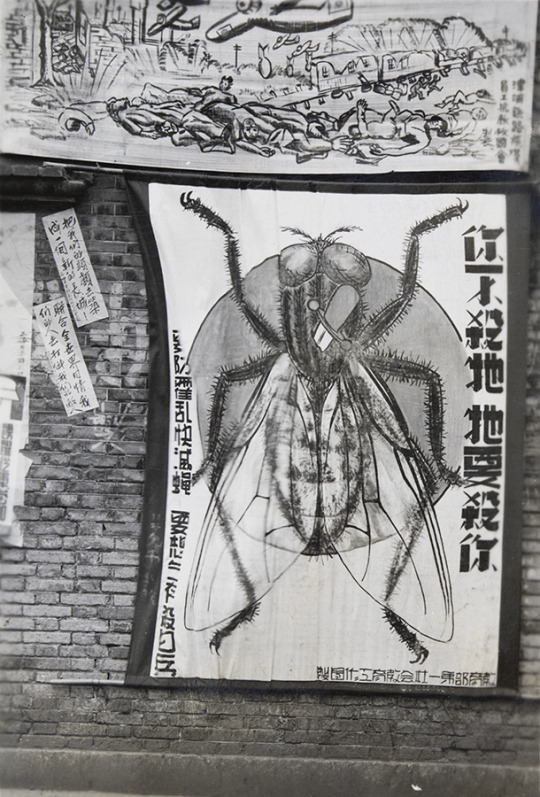


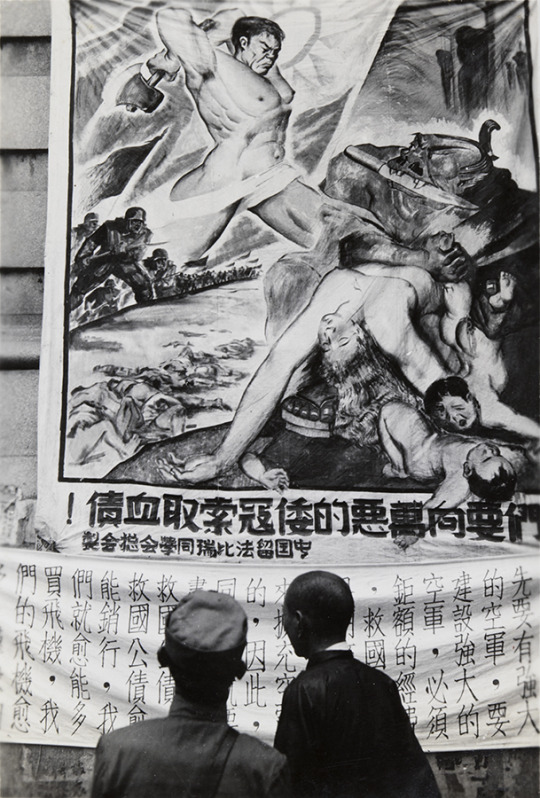



Propaganda posters in Wuhan, mid-1938. Found in an album that had belonged to Leslie Reginald Frederick Shrimpton RN (1910-1964), who served on the gunboat HMS Falcon in China waters from 1937 to 1939. All photographs and descriptions with translations from University of Bristol - Historical Photographs of China.
1) The banner depicts Nationalist forces attacking the Japanese. The Chinese text on the banner urges viewers to join the military, fight the Japanese, and thereby defend China. Bi-s168
2) Anti-Japanese public hygiene banner. The slogans on the lower banner (depicting a fly with a Japanese Rising Sun Nisshōki emblem) read: 'We need to knock down our enemies with the world's sympathy on us'. 'We need to prevent cholera and kill flies; and if you want to survive, kill the Japanese soldiers'. 'If you don't kill it, it's going to kill you'. The higher banner depicts Japanese bombers attacking a train. A wall poster on the left reads: 'Build a new Great Wall with our heads'.
3) Banner by L'Association des Etudiants Chinois de Retour de FBS (France, Belgium and Switzerland Returned Students Association), Hankow (Hankou). The banner text provides explicit details that accompany the image of 'cruel massacre and rape never before heard of'. Bi-s163.
4) Propaganda banner featuring Chiang Kai-shek. The slogans on the banner read: 'War of Resistance to the end!' and 'Support the leader'. Chiang Kai-shek is depicted beside Hankou (Wuhan) on the map of war-torn China. This photograph was taken in Wuhan.
5) The banner slogan reads: 'We demand that the Japanese repay their blood debt!' Photograph taken in Wuhan. Bi-s164. Photograph 3 shows the same building in a different location.. The actual term used here for 'Japanese' is 倭寇 'Dwarf pirates'. Bi-s167.
6) The main banner, showing charging soldiers and workers, bears the slogan: 'Defend Wuhan!' The Hankou (Hankow) bund is depicted in the banner - the clock tower is part of the Custom House. The banner was made by the 'Korean Youth Wartime Service Corps' (朝鲜青年战时服务团), founded in Wuhan in December 1937 by leftist Korean nationalists. Bi-s166.
7) Banner outside the headquarters of "L’Association des Etudiants Chinois de Retour de FBS", Wuhan. The banner was made by L'Association des Etudiants Chinois de Retour de FBS (France, Belgium and Switzerland Returned Students Association). The banner slogan reads 'Mobilize the power of the masses to defend Wuhan'. Sign on the window of the L'Association des Etudiants Chinois de Retour de FBS headquarters building at 69 Jianghan Road (江漢路六十九號) in Hankow (Hankou), in French: BUFFET & BILLIARD. Sign on the window in Chinese: Cold drinks / Coffee. Bi-s162
8) Remarkably, famed war photographer Robert Capa took this photograph of the street from inside of 69 Jianghan Road. This was identified by the excellent Visualizing China blog, and the image is marked from the International Center of Photography/Magnum Photos, who published it with other photos in 2018.
#wuhan#武汉市#hankou#war propaganda#propaganda#propaganda posters#black and white photography#sino-japanese war#sino japanese war#kuomintang#L'Association des Etudiants Chinois de Retour de FBS#朝鲜青年战时服务团#royal navy#republic of china#patriotic resistance#resistance to japan#japanese aggression in china#robert capa
33 notes
·
View notes